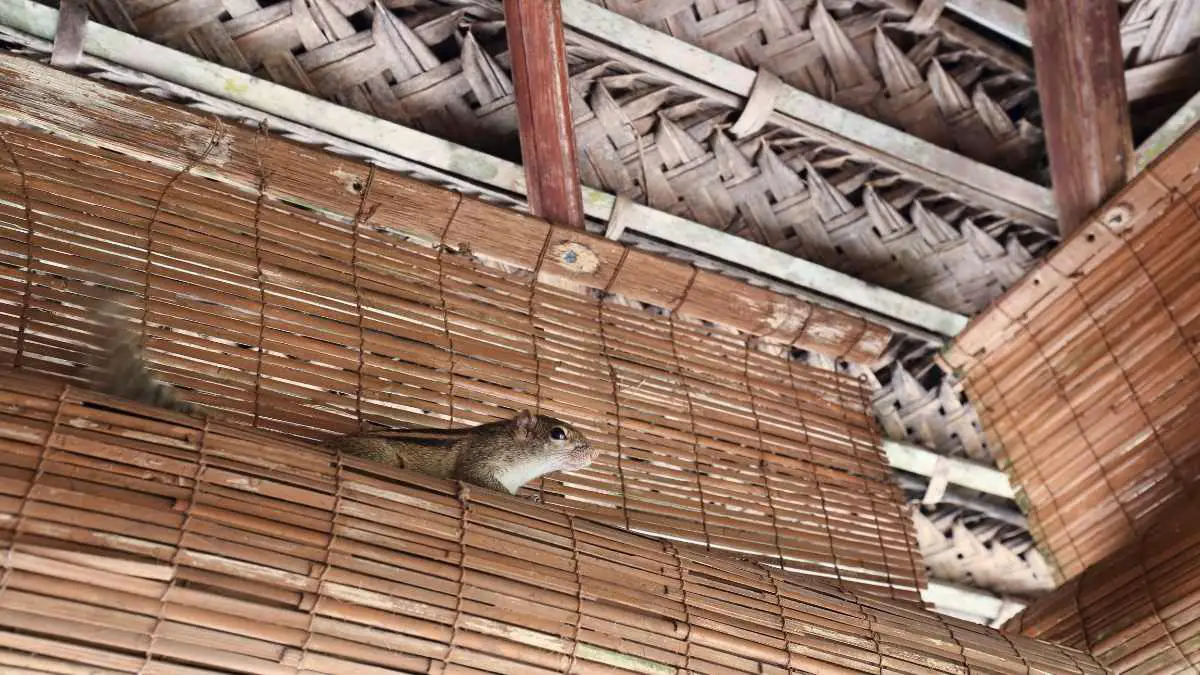Squirrels may look cute and graceful as they run up the trees in your yard, but they can also be dangerous, destructive, and damn annoying too!
These critters not only carry parasites but also make a mess wherever they go. This means they can do some severe damage to your home and can also put your health at risk.
If you are unlucky enough to have them in your attic, then you will need to get rid of squirrels fast before they set up a home there.
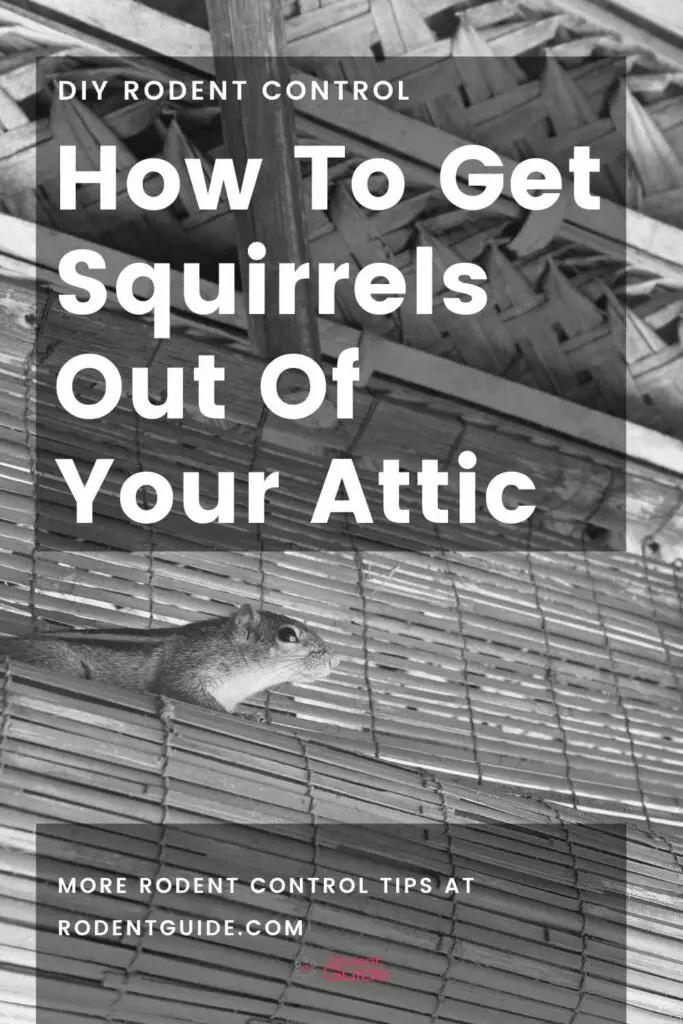
Steps To Get Squirrels Out of Your Attic in 3 steps
Are you sure it is a squirrel? Check out these signs that it is, in fact, a squirrel in your attic first.
Having squirrels in the attic can be destructive and dangerous, so follow this 3 step process to get them out.
Step #1 Find all points of entry
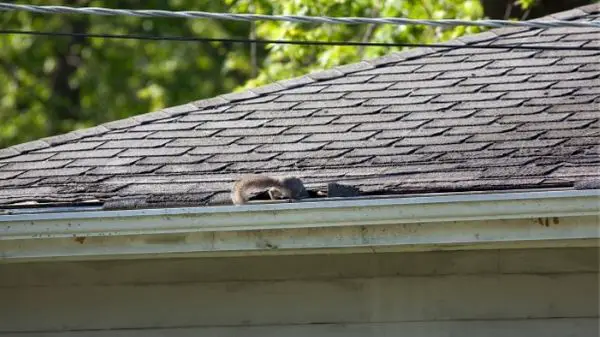
They might seem cute and cuddly when they’re outside, but once squirrels get into our attic, they can do some serious damage. Attic squirrels damage parts of your home that are hard to reach, meaning complex, often expensive repairs.
Common entry points include;
1. Roof vents
Attic roof vents may help you rid your house of warm air, but these pests consider them an open invitation. Squirrels will quickly chew through aluminum and plastic vent covers to get inside.
2. Roof edges
Because they’re exposed to lots of moisture, shingles and boards deteriorate relatively fast. This makes them an ideal squirrel entry point, as it’s easy for squirrels to chew through.
3. Roof soffit junctions
Soffit intersections are some of the most vulnerable parts of your roof. It’s hard for two roofs to stay flush at intersection points, leaving gaps for squirrels to get in.
4. Gable vents
These fulfill the same function as roof vents, but they’re installed on either side of a gable roof. Gable vents are made of soft materials such as plastic or wood, so they’re easy entry points for squirrels and other rodents.
5. Wall vents
Wall vents eliminate exhaust from the kitchen, laundry room, and bathroom. Since they’re placed outside the house, they’re often an entry point for squirrels. Plastic covers are not much of a deterrent.
6. Chimneys
Uncapped chimneys are an accessible entrance for squirrels. They may find it hard to climb aluminum or clay-lined flues, but they’ll easily climb brick.
Step #2 Seal all points of entry except for one
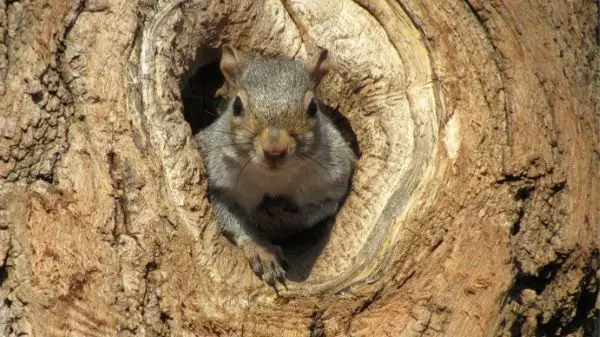
Seal all the points of entry you’ve identified, but leave one open. Besides the entry points discussed above, you’ll want to ensure that your windows and doors are correctly fitted and that they have screens.
Consider placing wire mesh over open vents and chimney tops. Alternatively, you could install a chimney cap. Besides keeping the squirrels out, it will protect your chimney from moisture and debris.
Next, close any other openings with steel wool or any other appropriate material.
If you’re still in doubt that your home is safe, you may consult a pest management expert for advice.
Don’t forget to leave a single entry point so the squirrels can leave by themselves. This should be the most visible and accessible entry point.
Cover this last opening with a sheet of newspaper. If it hasn’t been touched a few days after you last heard squirrel sounds in your attic, you can go ahead and seal it permanently.
Step #3 Give the squirrels a reason to leave
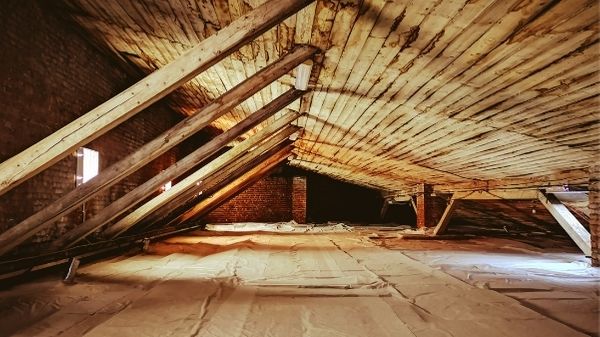
Unfortunately, you might have to convince the squirrels in your attic that it isn’t the best place to live. Sounds easy?
Squirrels won’t always leave willingly, especially when they have young ones. In such situations, the mother squirrel will leave and return to the attic to bring food to her young. If you close the final entry point after the adult squirrel leaves, you will face a nest of young squirrels to deal with.
To avoid this, evict the squirrels when you realize they’ve invaded your house. Bright lights and loud music can be surprisingly effective squirrel deterrents to drive and keep squirrels out.
If the squirrels still don’t leave, use traps. There are several types of squirrel traps you can use. Live-capture traps capture the animals alive. You’ll have to deal with the rodent after you’ve caught it, though, either by killing it or letting it go a reasonable distance away from your home (5-10 miles).
Unfortunately, the latter might be dangerous to both you and the squirrel as you may need a permit depending on the wildlife laws in your state. Live traps must also be checked regularly, as it would be cruel to let the squirrels starve. Kill traps are more humane than live traps (assuming you will not be checking them regularly) since they will kill the animal quickly and safely.
Both these types of traps are of the “box type,” and it’s ok to place them in attic runways where squirrels have been sighted. One other kind of trap you could consider is the “body-gripping trap.” You can set it directly outside entry points to capture the squirrel as it runs in and out of your home.
You may also place box traps in the yard to catch squirrels before they enter the house. Do not use kill traps outside, as you risk capturing other animals.
Whatever trap you decide to use, check out this squirrel bait guide to improve your chances of catching them.
Will squirrels leave the attic on their own?
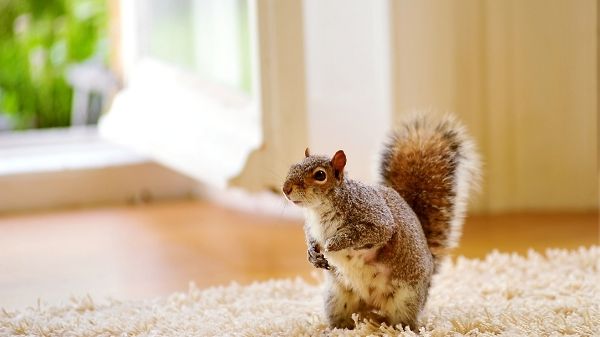
Squirrels are unlikely to leave on their own. As previously discussed, mothers will stay in one place until their young are old enough to fend for themselves.
Plus, if your attic offers a safe, comfortable home to squirrels, they will not leave without coercion! If you want to get rid of squirrels, you need to make it uncomfortable for them.
What Damage Will Squirrels Make in My Attic?
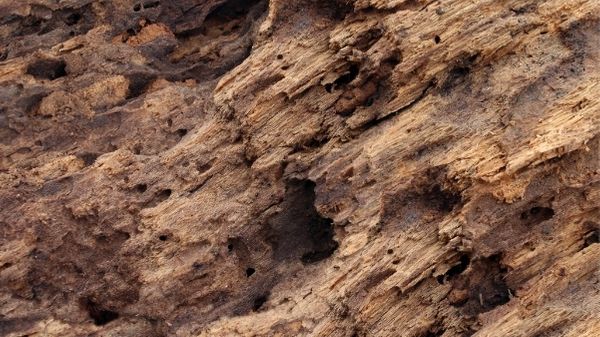
Squirrels can cause significant damage in the attic, but not always. It depends on their behavioral traits and the presence of electric cabling and PVC pipes or lack thereof.
1. They’ll chew through wood
Squirrels like to chew on wood. Expect extensive damage to wood beams or wood roof slats in your attic. They’ll also chew through wood trim from the outside to get in.
Squirrels are rodents, after all, so they continuously gnaw and chew on various items to file their teeth down. They’re drawn to electrical cables more than anything else. Once they’ve chewed through, the exposed wires can cause serious problems and pose a serious fire hazard.
Open wires may cause sudden service interruptions, start fires or electrocute unsuspecting passersby. Squirrels will also chew through PVC materials, so you should expect damage to water pipes if they run through your attic.
2. They’ll destroy your personal belongings
While some squirrels make their nests from leaves and debris they get from outside; and others will use whatever they can find in your attic.
They’ll rip material from blankets, clothes, and even books.
Unfortunately, their nests are highly flammable and constitute a significant fire hazard. Plus, they may target your sentimental items.
3. They’ll poop everywhere
Squirrels will deposit their pee and poop in your attic, and they tend to leave vast amounts of waste. Besides the stains and unpleasant odor, their feces may contain diseases such as Hantavirus, which is a serious health risk to you and all those who live with you.
Conclusion
After you’ve evicted squirrels from your home, you must take steps to ensure they don’t get back in. Seal all exit points, and trim any tree branches close to your house, as they may serve as an easy entry point.
You may want to consider contacting a pest control specialist for advice if you are not confident in handling the problem yourself.
You also have squirrel deterrent options too, such as peppermint.
Good luck, and stay safe!

